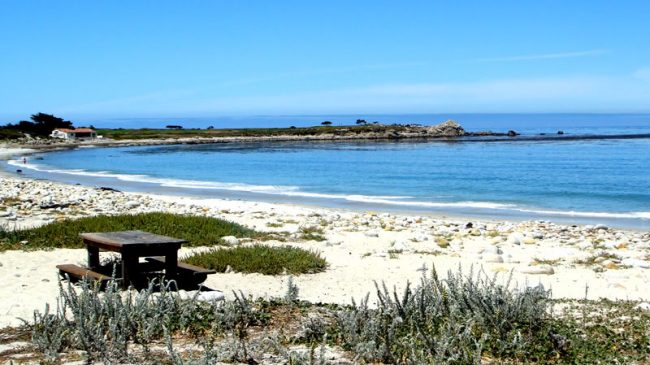Check out the whopper and revisionist history being touted in Louisiana. Murray Lloyd–co-founder and former president of the Black Bear Conservation Committee, since renamed the Black Bear Conservation Coalition, an organization dedicated to protecting the endangered Louisiana black bear–claims the Coalition is a model of landowner-friendly, consensus-based endangered species conservation.
Murray Lloyd states, “The BBCC is science-based, landowner-driven, ethically-rooted and non-regulatory,” and as a result, “The BBCC became a model for successful conservation through a public-private-partnership throughout the country.”
Now for a reality-based look at the Black Bear Conservation Coalition, the conservation of the Louisiana black bear, and Candidate Conservation Agreements.
The initial work undertaken by the Black Bear Conservation Coalition over twenty years ago represents the prototype Candidate Conservation Agreement, an initiative under the Endangered Species Act that has become increasingly popular because it’s touted as a voluntary, non-regulatory way to prevent species from being listed under the Act. In reality, Candidate Conservation Agreements rely on the threat of the Endangered Species Act’s fearsome regulations to gain “voluntary” compliance, as Murray Lloyd admitted before Congress almost twenty years ago. But first some background on the Black Bear Conservation Coalition.
After the U.S. Fish and Wildlife Service proposed to list the Louisiana black bear in 1990 under the Endangered Species Act, the Black Bear Conservation Coalition initiated their prototype Candidate Conservation Agreement to try to prevent listing. (This is the same black bear subspecies that gave rise to the term “teddy bear” because when President Teddy Roosevelt was on a hunting trip in Mississippi in 1902 he refused to shoot a bear under what he thought were unsporting conditions.) Despite that Fish and Wildlife listed the bear in 1992, the Coalition, which is still going strong, continues to garner widespread praise as an example of innovative, win-win endangered species conservation, focused on finding practical solutions to the conflict-ridden Endangered Species Act that protect landowners’ property rights.
The Black Bear Conservation Coalition promotes itself as an effort to preempt Endangered Species Act regulation by formulating a proactive habitat management plan among all “stakeholders,” especially private forest owners because they have most of the bear’s habitat. The management plan combines elements of a Candidate Conservation Agreement and an informal Habitat Conservation Plan, another so-called voluntary initiative under the Endangered Species Act in which landowners agree to put off limits some of their land in exchange for the feds giving them the green-light to use the rest of their land; thereby turning the off limits private land into a defacto federal wildlife refuge, even though if the government wants to acquire private land for any purpose it is required to compensate landowners under the Fifth Amendment of the Constitution.
The Black Bear Conservation Coalition’s main accomplishments to date have been to write the management plan, which was adopted by the Fish and Wildlife Service as the official recovery plan, educate the public, and push federal and state agencies to conserve the bear. The Coalition’s proactive, landowner-friendly image has been hailed by the Mississippi Fish and Wildlife Foundation, Sand County Foundation, Wildlife Management Institute and others as an innovative, win-win solution preferable to the usual command-and-control property restrictions imposed by the Endangered Species Act. All of which sounds great.
In reality, beneath this feel-good veneer of cooperation, the Black Bear Conservation Coalition has relied on the threat of Endangered Species Act draconian penalties–$100,000 fine and/or 1 year in jail for harming a single bear or even its habitat–to force private landowners to participate and negotiate. Murray Lloyd admitted (while testifying at an August 3, 1995 hearing before the Senate Environment and Public Works Committee, Subcommittee on Drinking Water, Fisheries and Wildlife–but unfortunately the testimony does not appear available online) the agreement reached by Coalition’s stakeholders only came about because of the threat of the Act’s punitive sanctions, which “served effectively as a cocked two-by-four to keep everyone at the table.”
Although the agreement was achieved with the threat of being whacked by the Endangered Species Act, during the same 1995 hearing at which he spilled the beans about the so-called voluntary agreement, Lloyd called the Black Bear Conservation Coalition “a model for natural resource conflict resolution.” Fast forward nineteen years and Murray Lloyd is still telling the same misleading and farcical tale. Unfortunately, others have swallowed this tale hook, line and sinker. Lloyd’s two-by-four analogy is very apt because it encapsulates how the Endangered Species Act often works; people are threatened and intimidated with getting clobbered by law in order to gain their “voluntary” compliance.
After separating myth from reality, there is one important lesson to be learned from efforts to conserve the teddy bear. The Endangered Species Act is the application of Teddy Roosevelt’s famous saying about how he conducted foreign policy–“speak softly and carry and big stick”–to conservation. Any reasonable person, upon learning of Murray Lloyd’s cocked two-by-four admission, or those knowledgeable about how the Endangered Species Act truly works, would not call this process voluntary, non-regulatory, or a model for conflict resolution and public-private partnerships to conserve endangered species.
